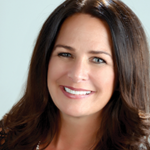
Small business is thriving in our state, and in Metro Phoenix specifically. Arizona State University and Grand Canyon University have programs focused on fostering entrepreneurialism; many of the Maricopa County community colleges are also active in this space with specialized programs, notably GateWay Community College‘s incubator, Center for Entrepreneurial Innovation; and numerous business incubators and accelerators throughout the Valley (see In Business Magazine cover story of last year “Incubating Business: Are Startups Accelerating Our Economy?”) are helping startups launch successfully into the business community.
Success begets success, and In Business Magazine asked leaders at the helm of some of our most successful companies to share insights on best practices and the changing business environment, based on their experience in these core concerns of all business enterprises: finance, human resources, leadership and management, marketing and communication, sales, and technology.
Question 1: Are there traditional “truths” (attitudes, ways of doing things) that need to be discarded in today’s business world?
Question 2: What is an innovative best practice you would advise to a fellow small-businessperson?
Finance – Banking and Lending
 Mary M. Holman
Mary M. Holman
Senior Vice President
National Bank of Arizona
Company established: 1984
Number of employees: 690 employees with National Bank of Arizona. National Bank of Arizona is a division of ZB, N.A., which operates in nearly 500 local financial centers across 11 Western states.
Q2: Best Practice? Get to know your banker. If you do not have a banker who has come out to visit your location/place of business, then you need to find another bank or banker. Getting to know your bank and your banker is paramount to your success. When in need of guidance and capital, every business owner should be able to pick up the phone and talk to his or her banker. Your banker should know your company and be able to help you navigate through various financial needs and challenges. This sounds simple, and it truly is, but so many business owners do not have a strong banking relationship. Your banker may not always be able to say “yes” to your capital requests, but your banker should be able to guide you to alternative sources of capital. Your bank and your banker should be one of your strongest and best business partners. If you don’t have a banker, ask a trusted friend or advisor for several referrals, and then begin the dialogue to determine whom you want as your financial partner.
Finance – Alternative Lending
 Joel Gottesman
Joel Gottesman
President
Liquid Capital of Arizona
Company established: 2009
Number of employees: 25 through shared services model
Q1: Truths? Traditional “truths” would hold that you fund growth by obtaining capital (from yourself, friends and family, or established investor infrastructure), and then obtain working capital debt through alternative financing such as factoring or asset-based lending, or through a bank loan if the more stringent credit standards can be met. If additional capital is still needed, there are some new ways of raising capital through crowd funding, which is becoming more of a reality and utilizes social media to reach investors more readily. Other options include contract manufacturing or joint venturing for an initial period to reduce the time it takes to move forward on your growth plan.
Q2: Best Practice? Find your sweet spot on how to engage prospective or existing customers or referral sources for growing your business. Social media provides a great opportunity to be out there to establish your business brand in a way that is not a “hard sell.” You have the opportunity to associate yourself and your business with creative trends and new ideas. Depending on your business model, LinkedIn and Twitter offer opportunities to build your network and business brand.
Finance – Accounting
 Chuck McLane
Chuck McLane
Senior Managing Director
CBIZ MHM, LLC
Company established: 1977
Number of employees: approximately 80
Q1: Truths? Things happen much more quickly in all aspects of our lives. Change is a constant. With constant change and the high speed of change, traditions have either had to evolve or have disappeared. We now have four generations in the workforce. Traditionalists and baby boomers try to hang on to traditions — such as elaborate accounting and reporting models, standard metrics, anniversary celebrations, and climbing the corporate ladder. Generation X and millennials are working to break down the traditional expectations and career progression. They question why finance and accounting measure certain things and not others.
In the past, the boss told you what to do and you did it. You trusted in the organization and leaders. Today, leaders are questioned by the new hires who feel that they have a different perspective on measuring success. They have a high expectation that they will find a better, faster, smarter way of doing things. When these changes take place, the way we measure success needs to evolve, too. With that, systems are being developed to track and measure many different aspects of business. New metrics and the “new normal” are being established and then changed again. It is not enough to look at the top line (revenues) or the bottom line (profit/loss). The new systems focus not only on the results internally, but on the activities outside the organization that may have an impact on the organization’s results. Organizations must have both internal and external focus to succeed.
Q2: Best Practice? You must anticipate and plan for change rather than react to it. We all know the world is not static. Thus, change is inevitable. In planning for change, you develop a proactive mindset that is always moving forward and staying ahead. If you are reactive, you are always in catch-up mode and chasing those ahead of you.
Human Resources
 Camille French
Camille French
Founder and Principal Consultant
AmeriSource HR Consulting Group, LLC
Company established: 2010
Number of employees: 8
Q1: Truths? Companies that are standing out as the best of the best are seeing great success in moving away from routine hiring practices, traditional policies and strict schedules. Using tools to assess behavior and individual style to determine a cultural fit should take precedence over years of experience when staffing and managing your team. Also, if presented correctly, policies like open-ended time off or flexible work schedules are resulting in statistics showing that employees are more engaged, productive and taking less time off than employees who have strict schedules and a “bank” of time to use. Why? Employees are feeling like they are being treated like professional adults and feel respected as part of a team without the pressure of having to earn their status within an organization.
Q2: Best Practice? Companies looking to enhance their culture and increase employee retention may have concerns and fear of chaos when adopting new traditions such as these. Implementing this culture requires change management from the top down, clearly communicating expectations and being consistent. The end result: loyal, engaged employees who see the success of the company a team effort.
 Ted Schuman
Ted Schuman
Founder and CEO
PlanetOne Communications
Company established: 1992
Number of employees: 16
Q1: Truths? Going to work isn’t what it used to be. People are working from anywhere and everywhere. Millennials, in particular, expect businesses to promote and maintain a healthy and balanced workforce. Flexibility is a must to attract and retain talent — and that’s not exclusive to millennials. Technology has influenced how we work, why we work and where we work. In today’s connected world, the adage of having “butts in the boardroom to get business done” no longer applies. With the right technology in play, you can empower your workforce and grow your business while limiting expenses.
Another traditional truth to reconsider is around the company culture. Benefits and cool perks aside, what purpose does your company serve in making this world a better place? Today’s workforce is concerned with giving back and making a difference. In order to thrive in this emerging environment, businesses must be flexible, have a clear mission and establish a culture that engages with their employees on a deeper level, providing purpose and offering opportunities for greater input on how work is conducted.
Q2: Best Practice? Successful businesses commit themselves to creating work environments that enable employees to thrive both as individuals and as contributors to the business’s overall success. Striving to create positive employee environments and clearly communicating these expectations in the HR philosophy and mission is a best practice. The most effective philosophies focus on fostering innovation and collaboration, creating a work place where employees feel their voices are heard and acted upon. This fosters organizational success from the bottom up and inspires success from the top down.
Leadership & Management
 Adam Goodman
Adam Goodman
President and CEO
Goodmans Interior Structures
Company established: 1954
Number of employees: 150
Q1: Truths? The disgusting phrase “you should be grateful you have a job” has been muttered for the last time. It can be decommissioned and put in a museum along with other retired phrases like “take a memo for me” and “operator, get me an outside line.”
We live in an entrepreneurial age, and the culture celebrates people who quit their job to flip houses, develop an app, drive for Uber, open a coffee shop, arbitrage collectables or chase their dream. There is practically no barrier to entry to owning your own business, and every neighborhood has at least one folk hero who can work in his pajamas.
For those who prefer not to take the risk, legions of companies offer an opportunity to “be a part of something bigger than yourself” by disrupting or solving or reinventing or liberating a particular industry, sector, region or planet.
With all of these options, the burden to create a compelling work environment is on employers. Today’s jobs must be fulfilling and resonate with an employee’s inner sense of purpose. Indeed, enlightened employers are grateful that their people choose to work for them.
Q2: Best Practice? Everyone knows what you are not good at. Everyone, that is, except for you.
Oh, you might be able to recite a pat answer about your weakness that has the ring of humility. “I just work too hard” is a typical favorite among the type-A crowd. Another favorite self-congratulatory flaw is, “I demand perfection.”
While those might be true, they aren’t the glaring weakness that the rest of us see in you. Unfortunately your ego is stopping you from seeing it, too. So we all dance around your weakness and pretend it isn’t there … except that the rest of us give each other a knowing glance when your weakness is on display.
Maybe you are a slow decision maker. Or a conflict avoider. Or you play favorites. Or you judge too quickly. Or you hold others to a standard that you can’t maintain for yourself. Whatever it is, you really should figure out what it is.
And once you know, shine a light on it. Be vulnerable and open up about it. Catch yourself doing it and acknowledge it. Encourage others to call you on it. The humanity you display in embracing your weakness will inspire others to explore ways to discover and improve their own weaknesses. If it’s authentic, then it’s powerful.
 Michelle Sirott
Michelle Sirott
Practice Director
Point B, Inc.
Company established: 1995
Number of employees: 39 (Phoenix practice); 575 (total in firm)
Q1: Truths? Senior leaders aren’t the only ones who “know best.” Millennials are certainly on the minds of leaders today. Many fear they don’t have the right strategies in place to hire, develop and retain this demographic. But leaders should be excited about this generation. They want to be treated as equals; they want social justice; they want camaraderie with their colleague; and they’re looking for a place to grow and develop. Which is exactly what generations before them wanted. There are impressive parallels between baby boomers, Gen X’ers and millennials that have been overlooked because we’ve kept the focus on what makes them different rather than what makes them the same. We need to get excited about the development and engagement of this generation. Accelerate both if you must, but embrace the benefits — and don’t feel like you have to change everything in your company to succeed. Start with the basics. Bring them to strategy meetings. Listen to their ideas. Allow them to become valued members of your team. And remember back to what you might have wanted at that same time in your career.
Q2: Best Practice? Don’t segregate your communications. Gone are the days when leaders should hold back information from any segment of their population. For employee engagement and successful business results to reach new heights, everyone should be informed — because you can’t have a voice (and groundbreaking ideas) if you don’t know what’s going on. All employees should see and understand financials, plans and goals. The good stuff. The challenging stuff. “The more you know, the more you grow” is really coming home to roost in the culture-driven, accelerated-advancement of 2016 (and beyond).
Know that culture shouldn’t eat strategy for breakfast. The gap between culture and business strategy and outcomes is closing. This isn’t a fight. In fact, it’s quite the opposite. Culture should feed your strategy. Strategy should feed your culture. One shouldn’t drive the other. Approach planning for both with the same thoughtful precision. Equal weight for both culture and strategy results in successful outcomes and an engaged workforce.
Marketing & Communication
 Matthew Clyde
Matthew Clyde
President and Founder
Ideas Collide
Company established: 2005
Number of employees: 42 and growing
Q1: Truths? The boundaries and costs of entry have shifted across all businesses; today, you can easily start and run an enterprise via a few apps and tools. This requires everyone in an organization to be adaptive to the market. Organizational structures, 9-to-5 hours, full transparency of business practices, employee engagement and more continue to shift outside what was once considered the norm and tradition. This shift requires business owners to be flexible to multiple interests and options. Today’s workforce seeks diversity, change and movement at the same pace as the market is moving. All-around business stakeholders have to be very adept and capable of embracing change.
Q2: Best Practice? The saying is common: Innovate or die. But for an innovative environment to thrive, you have to focus on the company culture. Ideas Collide has always carried a culture-and-team-first philosophy. It drives our business decisions and shapes our agency values. It can be challenging at times as a small business to take this route when resources can be tight, but it always delivers a return. Ownership, collaboration and giving back to our community and team is our most important innovative practice requiring a daily investment of time and focus.
 Park Howell
Park Howell
President, Park&Co
Founder, The Business of Story
Professor of Storytelling for the Executive Master of Sustainability Leadership at Arizona State University
Park&Co established: 1995
Q1: Truths? The one truth that will never be discarded in the business world is showing up every single day.
I think old models of command and control are being replaced by networks of connectivity that are placing the power in the hands of employees and consumers and away from brands. Smart companies are evolving from promoters of stuff to publishers of meaningful content that empowers people and moves them to action through a shared vision and the stories they tell.
Q2: Best Practice? Most companies are trying to be heard in this noisy world, but few are cutting through the clutter. The greatest innovation in communication today has, actually, been around since the beginning of mankind — and that is the power of a well-told story. Given the growth of our attention economy, ADHD has become a communicable disease. And we’re all the virus. The antidote is in telling and living into a better brand story than your competition.
Sales
 Robert Thornton
Robert Thornton
Founder
Paper Clouds Apparel
Company established: 2007
Number of employees: 1 full time employee; 10–12 adults with special needs whom we hire as independent contractors every two weeks to fold and package our shirts when they have finished printing
Q1: Truths? I feel too many businesses are focused only on money, and when that is your focus you miss out on a lot of the other factors that can make your business successful. I believe you need to focus on the people you are helping with your business and on the people working for you. In my experience, if you can keep both your customers and your employees happy with you and your business, the sales and success will come.
Q2: Best Practice? I also think way too many people in business wait too long to make changes or pivot. The No. 1 thing in business is to take action. Always be innovating, updating and improving the way your company is running, and do so in all aspects. Just never be stagnant — that is the kiss of death for so many businesses.
 Mike Toney
Mike Toney
President and CEO
Conquest Training Systems
Company established: 1997
Number of employees: 5
Q1: Truths? Traditional ways of building a solid customer base of the right clients has radically changed in the past 10 years. I liken it to traveling to a new country and pulling out a map and tracing your finger over the lines to find your destination versus turning on your smartphone and speaking to Google to give you directions to the location you seek. The reason this is possible is, data is everywhere and you can aggregate it. It’s the same for the customer finding you or you finding your customer.
The phone cold call or walk in is equivalent to tracing a map with your finger, while LinkedIn or having a strong Web presence and online marketing strategy utilize the fact that data is everywhere. We have calculated for our customers that a cold-called lead costs $400–$700 per lead, and an Internet-developed lead can be as little as $120–$300 — a dramatic difference. Also, think about how much more effective your sales team can be if they don’t have to waste time prospecting.
Q2: Best Practice? When do you plant a tree? Long before you need it. It is not usually feasible to plant a mature tree, and it takes time for a sapling to grow. Today, likewise, it can take six months to three years to have your Internet strategy mature to full production. Get on this today. Waiting is not an option if you are committed to success.
Technology
 Clate Mask
Clate Mask
Co-Founder and CEO
Infusionsoft
Company established: 2001
Number of employees: 615
Q1: Truths? Entrepreneurs go into business for many reasons, but one common reason is to be their own boss. With that in mind, it can be very easy to fall into the trap of making all the decisions as “the boss.” This top-down hierarchy model where the entrepreneur has all of the best thinking is outdated and is actually counterproductive to the business. The strength of a business often relies on the diversity of talent from all team members. This is why at Infusionsoft, everyone, regardless of title or role, is encouraged to provide feedback on the company, its products, services, leadership and operations. For example, employees are invited to participate in various company-wide SWOT analysis meetings, which is essential in developing the company’s annual priorities.
Q2: Best Practice? For entrepreneurs doing less than a million in annual sales, I highly recommend automating as much of your sales and marketing as possible. If business owners don’t figure out how to consistently get leads and convert them into customers, there won’t be a business to lead. Small-business owners who are doing at least a million in revenue (or are quickly approaching it) need to understand and articulate their vision, which at Infusionsoft consists of our purpose, our values and our mission. Though this isn’t really a new or innovative concept, most entrepreneurs neglect this important piece of advice. The basic yet critical practice of having a clear vision helps guide and influence every strategic decision a company makes. Grounded in a purpose, values and mission, small-business owners will always have clear sight of their North Star and maximize their likelihood of success.
 Jeffrey Pruitt
Jeffrey Pruitt
Partner and CEO
Tallwave
Company established: 2009
Number of employees: 23
Q1: Truths? As much as many of the foundational elements of building a business remain, what has changed — particularly in the technology world — is the need to involve customers early and often in the process. In highly commoditized landscapes, maintaining a feedback loop with customers will help a business remain competitive and relevant.
Q2: Best Practice? Today, we’re afforded a nearly endless supply of tech tools that enable businesses to research the marketplace and find the white space, test their theories among potential customers, gain feedback, and truly understand the customer journey. That knowledge, and building those roadmaps, is like gold to the businesses that leverage them. Every company, regardless of industry, needs to be thinking about how it will transform digitally. Otherwise, it runs the risk of falling victim to myopia.















